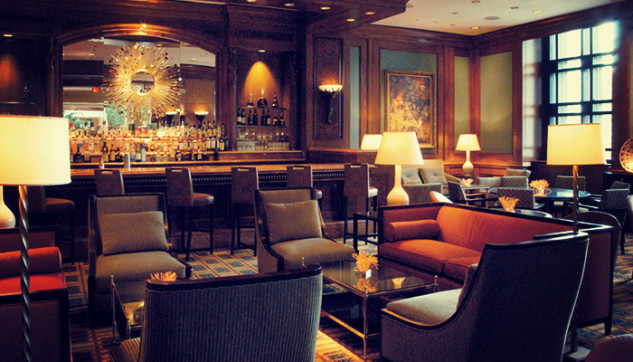
After growing up on her family’s Grès de Montpellier vineyard in France, it’s no surprise that Elise Losfelt went on to obtain a master’s degree in viticulture and oenology from Montpellier SupAgro in 2011. The sixth-generation winemaker, who lives in Epernay, now puts her talents to good use at world-renowned champagne house Moët & Chandon.
The luxury bubbly brand, which has been around for more than 270 years, just released its Grand Vintage Rosé 2006 in the United States. After aging for seven long years, the refined beverage hits the palate in the most pleasurable way. Expect notes of peach, mango and banana alongside white pepper, flint and marzipan to delight you while honeysuckle, bergamot and anise tease the taste buds.
When making plans for spring sipping with friends, you can snag a glass of the brand’s non-vintage bubbly, like the Brut Impérial at Forbes Travel Guide Four-Star The St. Regis Atlanta’s The St. Regis Bar or The Wine Room. But don’t just limit your Moët & Chandon experiences for when you’re out and about. Losfelt encourages you to indulge at home, too. (Grand Vintage Rosé 2006 is available in finer stores for purchase.) During her first visit to Five-Star Four Seasons Hotel Atlanta, the vino expert revealed her top tips for sipping the celebratory drink.
Store It In The Dark
“The temperature in your wine cellar should be between 55 and 59 degrees Fahrenheit. And the humidity must be high and consistent, so 85 percent humidity is really good. In addition, the wine cellar must be without light because champagne is a product that is sensitive to UV [radiation]. This is the reason why we have green bottles because it protects the champagne from the UV. If the light of the sun touches the champagne, it will change the aroma. If you ever have that at a restaurant or from a store, you can send it back. It’s called light stroke. It is one of the defects you can have in champagne.”
Use The Black Tab
“When you have a new bottle of champagne, you’ll find a little black tab on the side. Peel it around on the bottle and take the foil off. Then, put your strongest hand on the top of the bottle, with your thumb holding the cage in place, and turn the twisted wire six times to release the case, but don’t take the cage off. Hold the cork and cage together, keeping pressure on them with your stronger hand, then put your weaker hand on the bottom of the bottle. The job of your weaker hand is to turn the bottom of the bottle back and forth. The key here is to move the bottom of the bottle and not the cork. Then slowly, the cork will come out.”
Drink It From A White Wine Glass
“It’s really fun to have champagne in a flute, but it doesn’t allow you to enjoy the aromas and the textures of the champagne completely. Having champagne in a white wine glass with a curved bowl shape permits you to enjoy the aromas because they have the opportunity to expand in the glass and concentrate at the top of the glass. The glass’ curved shape sends the champagne directly to your tongue, whereas when you drink from a flute, the long narrow shape forces your head backward, like drinking a shot, and the champagne goes directly to your throat so you don’t really enjoy the flavors. You feel the bubbles, you feel the effervescence but you don’t really feel the aromas and flavors of the champagne. A white wine glass is better if you really want to see the champagne as a wine, which it is — it’s a wine before becoming a sparkling wine. The champagne will express itself better.”
Don’t Use Your Coupe For Champagne
“If you have champagne coupes at home and you don’t know what to do with them, use them for ice cream or for yogurt. Don’t use them for champagne because their flat shape overexposes the champagne to air, causing bubbles to escape too quickly. Your champagne will also warm up too quickly in a coupe because of the way you hold a coupe by its bowl and not by the stem, which you should do. You lose the quality of the champagne. Warm champagne is not something that you want to have. Normally, the temperature that you want to drink champagne is around 50 to 55 degrees Fahrenheit.”
Pair Your Bubbly With Beef Or Pizza
“For a Grand Vintage, a great pairing is slowly cooked veal or beef. Moët & Chandon Grand Vintage Rosé can bring you harmony with meat whereas a red wine — and I love red wine — sometimes dominates your dish. With the rosé champagne, you have a good harmony. For the Moët & Chandon Rosé Impérial, have it with a simple dish — something that is oily and savory at the same time. You can have French fries or nuts. Ceviche, crude fish or something that is marinated in lemon and spices would be perfect. If you want to have an everyday meal, fried chicken would work with the Rosé Impérial. The chicken is supple on the palate. White pizza is perfect, too.”


